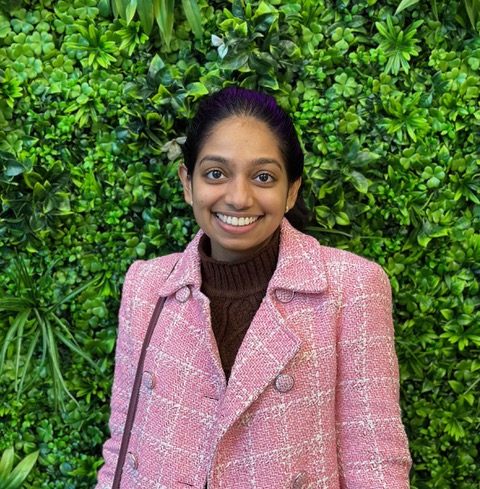
Anahita Srinivasan is a third-year undergraduate student majoring in 6-2 (electrical engineering and computer science). She is currently conducting research at the Anyscale Learning For All (ALFA) lab at CSAIL as a Nadar Foundation Undergraduate Research and Innovation Scholar with the SuperUROP program. Her research focuses on two main topics: evaluating the cybersecurity knowledge of large language models and generating PDDL (Planning Domain Definition Language) files with LLMs using a combination of tactics including prompting, output parsing, and context-free grammar enforcement. Outside of her research, she enjoys reading, taking walks, and exploring Boston.

Eugenie Lai is a 3rd-year PhD student advised by Principal Research Scientist Michael Cafarella in the Data Systems Group at MIT CSAIL. Today, with the explosion of data, more and more people are in desperate need to access and make use of data in many fields outside of CS. Her current research focuses on developing methods to help users interact with and make sense of data.
Abstract
Data preparation is an essential step in every data-related effort, from scientific projects in academia to data-driven decision-making in industry. Typically, data preparation is not the novel or interesting piece of a project—it transforms raw data into a format that enables further innovative work. Because data preparation scripts are never intended to be interesting, are project-specific, and are written in general-purpose languages, they can be tedious to understand and check. As a result, data preparation scripts can easily become a breeding ground for poor engineering and statistical practices.
Ideally, data preparation scripts are "admirably boring"—they should serve the project, but otherwise be as simple and as standard as possible. We propose a bottom-up script standardization framework that takes a user’s data preparation script and transforms it into a simpler, more standardized, more boring version of itself. Our framework takes the user’s input script not as an unchangeable definition of correctness, but as a semantic sketch of the user’s overall intent. We present an algorithmic framework and implemented a prototype system. We evaluate our approach against state-of-the-art methods, including GPT-4, on six real-world datasets. Our approach improves script standardization by 39.5% while not meaningfully changing the user’s intent, while GPT-4 achieves 2.9%.
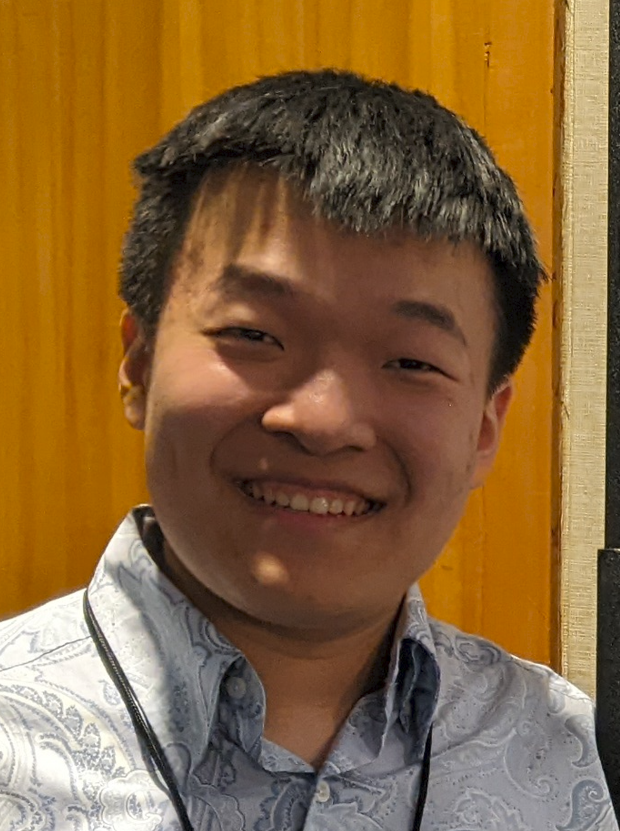
Fisher Xue received his BASc in Computer Engineering from the University of British Columbia, Canada in 2022. In 2020, he worked in the Data Center Solutions Group at Intel, Vancouver, as an architecture performance modeling intern. He is currently pursuing his PhD under the supervision of Associate Professor Vivienne Sze and Professor of the Practice Joel Emer. His current research focuses on the design of tensor accelerators for sparse data.
Abstract
Sparse tensor algebra is a challenging class of workloads to accelerate due to low arithmetic intensity and varying sparsity patterns. Prior sparse tensor algebra accelerators have explored tiling sparse data to increase exploitable data reuse and improve throughput, but typically allocate tile size in a given buffer for the worst-case data occupancy. This severely limits the utilization of available memory resources and reduces data reuse. Other accelerators employ complex tiling during preprocessing or at runtime to determine the exact tile size based on its occupancy. This work proposes a speculative tensor tiling approach, called \emph{overbooking}, to improve buffer utilization by taking advantage of the distribution of nonzero elements in sparse tensors to construct larger tiles with greater data reuse. To ensure correctness, we propose a low-overhead hardware mechanism, Tailors, that can tolerate data overflow by design while ensuring reasonable data reuse. We demonstrate that Tailors can be easily integrated into the memory hierarchy of an existing sparse tensor algebra accelerator. To ensure high buffer utilization with minimal tiling overhead, we introduce a statistical approach, Swiftiles, to pick a tile size so that tiles usually fit within the buffer's capacity, but can potentially overflow, i.e., it overbooks the buffers. Across a suite of 22 sparse tensor algebra workloads, we show that our proposed overbooking strategy introduces an average speedup of 52.7x and 2.3x and an average energy reduction of 22.5x and 2.5x over ExTensor without and with optimized tiling, respectively.

Zach Johnson is currently a Master's of Engineering student in MIT CSAIL's Decentralized Information Group, and is advised by Principal Research Scientist Lalana Kagal. He is primarily interested in the ethics and safety behind Large Language Models (LLMs), and how we can create algorithmic methods for ensuring the detection of adversarial attacks in these models.
Abstract
Large Language Models (LLMs) generally are robust against outright harmful requests (e.g. Tell me how to build a bomb). However, there exist ways of circumventing these guard rails, called Jailbreak Attacks, in which a user instructs the LLM to take on the role of a made-up character that does not abide by certain ethical guidelines. These attacks have been shown to be quite successful in yielding harmful information from LLMs. They also do not require any algorithmic generation—meaning the pool of users who can generate these attacks is much larger than normal. In this project, we explore the current landscape of jailbreak attack prompts in LLMs—that is, how they can be automatically generated, how we can automatically detect when a jailbreak has taken place, and how we can automatically identify these role play prompts in order to prevent future attacks. We hope this work provides key insights and methods on how to robustly defend against future unforeseen jailbreak attacks.
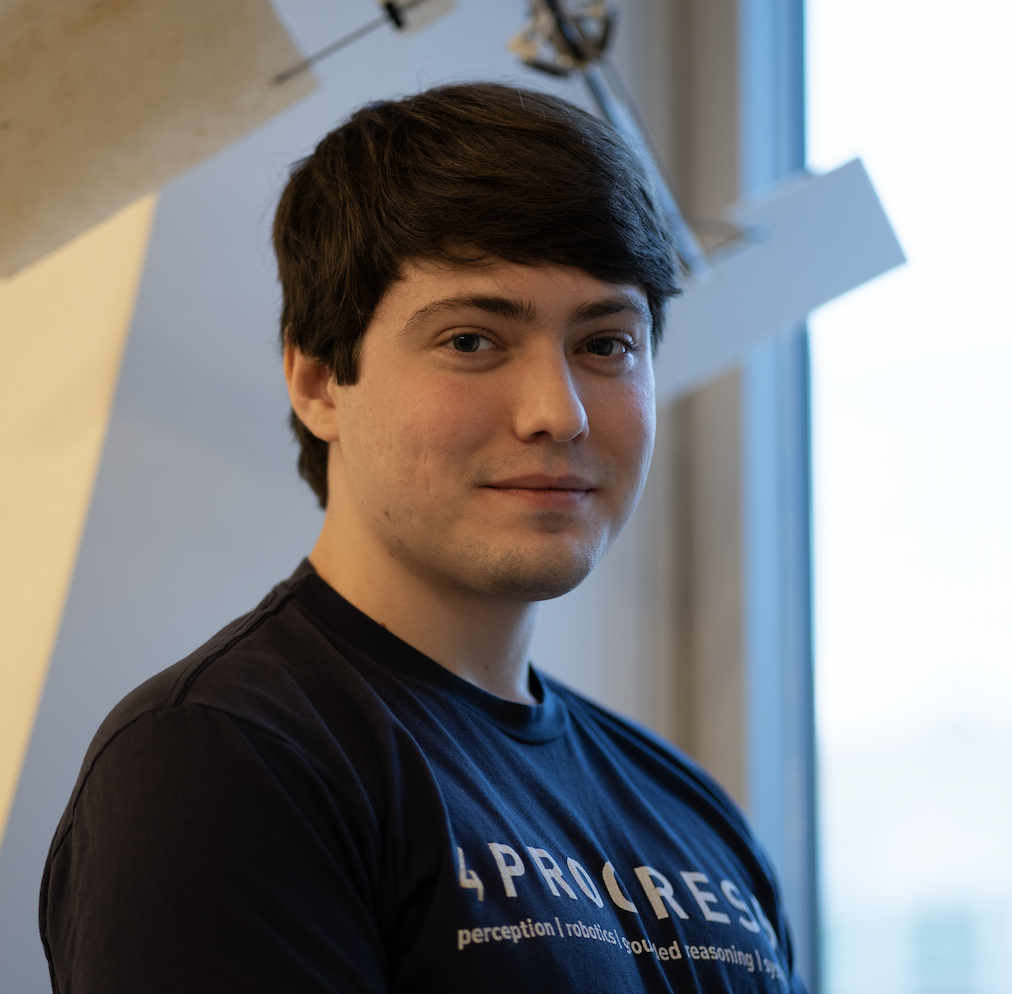
Thomas Cohn is a computer science PhD student at MIT, and a member of the Robot Locomotion Group. Thomas is originally from Cambridge, Massachusetts, but grew up in Ann Arbor, Michigan. He has been passionate about mathematics and computer programming for most of his life, and developed an interest in robotics in high school as a member of FIRST Robotics Team 3322. During his undergraduate studies, he worked as a research assistant at the Laboratory for Progress under the direction of Professor Chad Jenkins. At MIT, he is advised by Professor Russ Tedrake and works in the Robot Locomotion Group. The group's research focuses on motion planning, primarily for robotic manipulation tasks. Thomas is particularly interested in developing novel algorithms that exploit underlying geometric structure to help robots move faster, safer, and more elegantly.
Abstract
In order for a bimanual robot to manipulate an object that is held by both hands, it must construct motion plans such that the transformation between its end effectors remains fixed. This amounts to complicated nonlinear equality constraints in the configuration space, which are difficult for trajectory optimizers. In addition, the set of feasible configurations becomes a measure zero set, which presents a challenge to sampling-based motion planners. We leverage an analytic solution to the inverse kinematics problem to parametrize the configuration space, resulting in a lower-dimensional representation where the set of valid configurations has positive measure. We describe how to use this parametrization with existing motion planning algorithms, including sampling-based approaches, trajectory optimizers, and techniques that plan through convex inner-approximations of collision-free space. A video of the results can be found above.

Michael Gilbert (he/him) is a PhD student in computer architecture, specializing in accelerator architectures. He works in the Energy-Efficient Multimedia Systems group at the Massachusetts Institute of Technology, co-advised by Associate Professor Vivienne Sze and Professor of the Practice Joel Emer.
Michael’s research is on fused-layer dataflow accelerators, focusing on the trade-off between: reusing data within and across layers, retaining and recomputing data, and leveraging parallelism in multiple layers and within a layer. He has presented his work at the International Symposium on Performance Analysis of Systems and Software, 2023.
Previously, Michael earned his BS and MEng from the Massachusetts Institute of Technology. In his free time, he enjoys hiking, biking, and cooking.

Christopher Wang is a PhD student advised by Principal Research Scientist Boris Katz and Research Scientist Andrei Barbu at the InfoLab in MIT CSAIL. He is interested in NLP, machine learning, and neuroscience.
Abstract
We create a reusable Transformer, BrainBERT, for intracranial recordings bringing modern representation learning approaches to neuroscience. Much like in NLP and speech recognition, this Transformer enables classifying complex concepts, i.e., decoding neural data, with higher accuracy and with much less data by being pretrained in an unsupervised manner on a large corpus of unannotated neural recordings. Our approach generalizes to new subjects with electrodes in new positions and to unrelated tasks showing that the representations robustly disentangle the neural signal. Just like in NLP where one can study language by investigating what a language model learns, this approach opens the door to investigating the brain by what a model of the brain learns. As a first step along this path, we demonstrate a new analysis of the intrinsic dimensionality of the computations in different areas of the brain. To construct these representations, we combine a technique for producing super-resolution spectrograms of neural data with an approach designed for generating contextual representations of audio by masking. In the future, far more concepts will be decodable from neural recordings by using representation learning, potentially unlocking the brain like language models unlocked language.
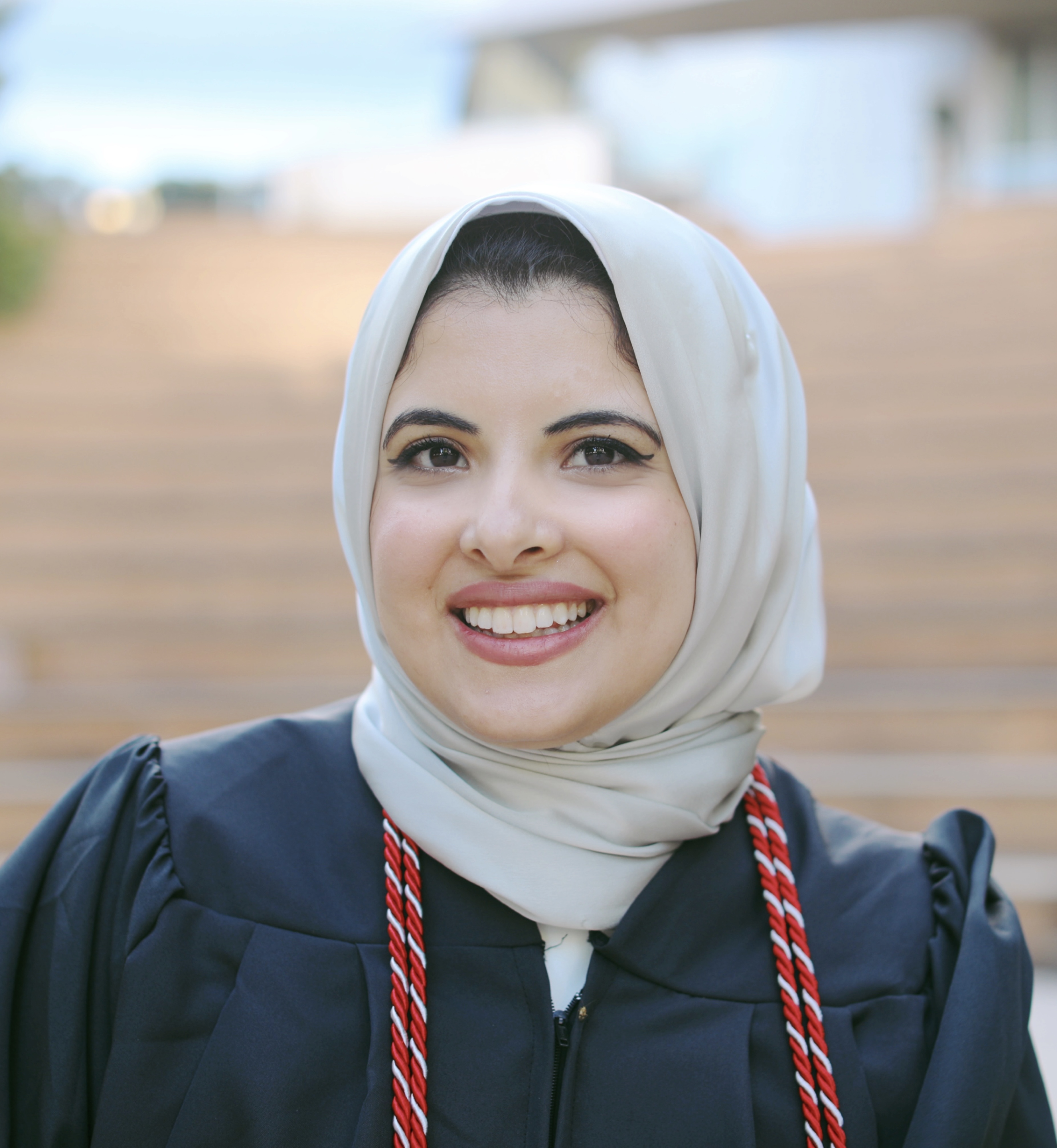
Nouran is pursuing her PhD at CSAIL, MIT, where she is part of The Haystack Research Group under the supervision of Professor David Karger. She is also mentored by Farnaz Jahanbakhsh, an Assistant Professor at the University of Michigan. Her research lies in the intersection of human-computer interaction, social computing, and AI. She designs, constructs and tests novel computing systems aimed at enhancing user experiences, safety, trust and interactions on the web. This involves addressing crucial aspects such as identity representation and content moderation within online spaces, especially social media platforms. She has also worked on ML projects for boosting team productivity and for healthcare. Her work experiences include internships at Adobe Research, University of Illinois at Urbana-Champaign, University of California Berkeley, Microsoft Research, and the Allen Institute for AI. She is honored to have received recognition as an Adobe Research Scholar and Generation Google Scholar. Her work has been featured in notable articles by MIT News and Microsoft.
Abstract
Enhancing Online Spaces for Safety and Free Expression: Our research is dedicated to pioneering new design paradigms and computing systems that bolster safety and trust online, aiming to balance the essentials of free speech with the need for secure environments. Our focused objectives include:
- Meronymity in Digital Interactions: We are redefining digital communication by enabling selective identity disclosure through meronymity, offering credibility and protection while fostering open engagement. Proven effective in academic settings, this approach promises wider benefits by reducing social anxieties and facilitating easier exchanges.
- Extending Meronymity Across Social Media: We seek to apply meronymous communication broadly, particularly on social media, to support nuanced dialogues and aid minority and vulnerable groups. A crucial aspect of this expansion is authenticating identity elements through human verification to maintain trust.
- User-Centric Trust-Based Moderation: At the core of our approach is a trust-based moderation system, empowering users to customize their online spaces to their comfort levels, thereby making content moderation more relevant and individualized.
- AI and LLMs for Enhanced Interactions: The exploration of leveraging artificial intelligence and large language models raises vital questions about their integration into content moderation, with the goal of achieving personalized moderation that respects user nuances.
Through these endeavors, we aim to create online platforms that mirror the complexity of human interaction, where the principles of safety, trust, and open dialogue intertwine, ensuring every participant feels safe, heard, and understood.

Joonhyuk Cho is a PhD candidate in EECS (Electrical Engineering and Computer Science) department at MIT. His research lies on the intersection of data science, machine learning, and statistics on healthcare and finance domain.
Abstract
This study uses large language models (LLMs) to predict clinical trial outcomes based on patent data. A rich source of early-stage drug information, this data was analyzed via an LLM to forecast the outcomes of clinical trials in phases 1 through 3. Preliminary results indicate that the patent data's predictive strength increases with each trial phase (AUC-ROC of 0.60 for phase 1, AUC-ROC of 0.72 for phase 3). This suggests that investors can assess financial risk based on findings from the preclinical stage, making therapeutic development a more attractive investment and bringing more capital into the sector. LLMs offer a new platform for risk mitigation and investment decision-making in the biopharma industry.
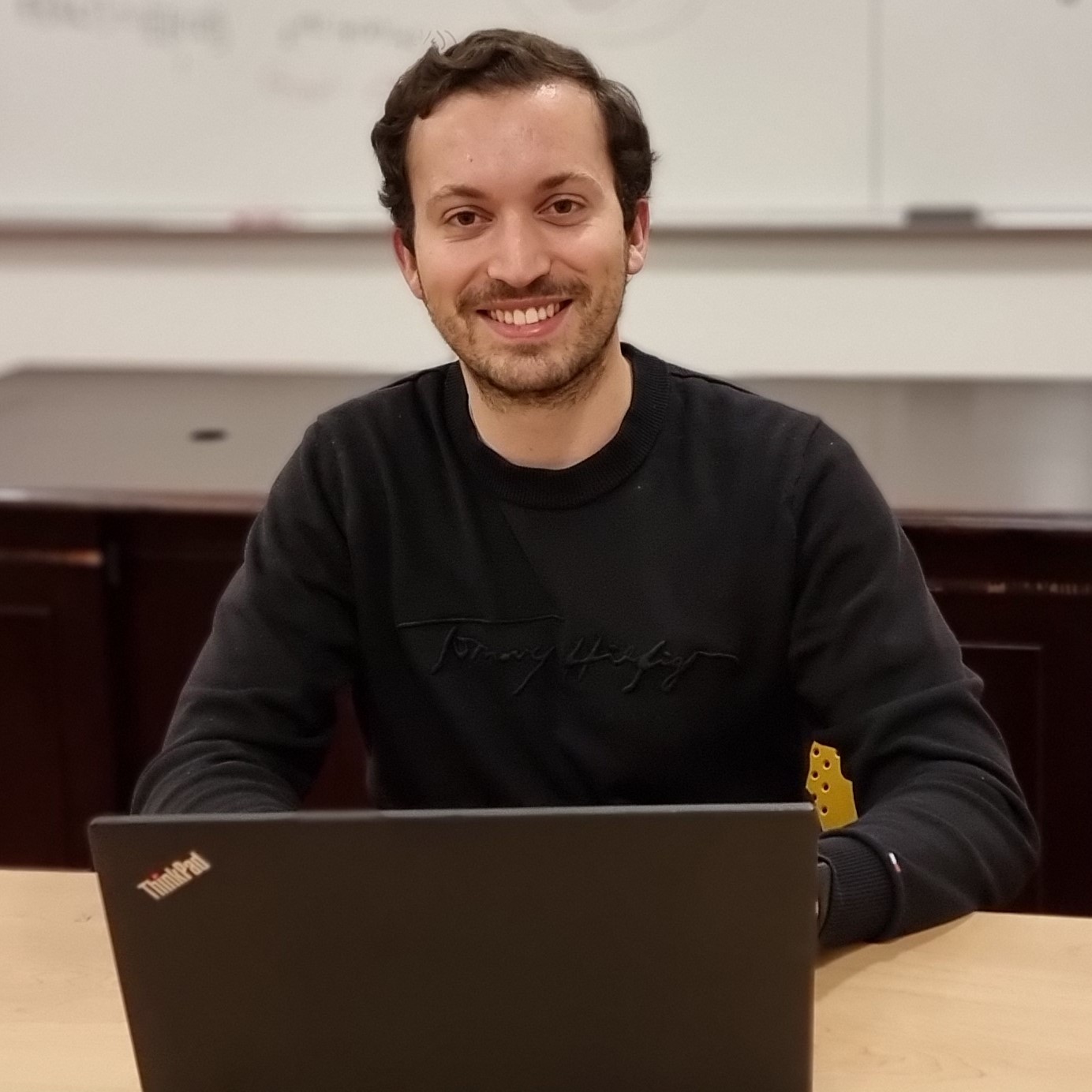
Markos Markakis is interested in enabling the efficient management of big data by designing novel high performance data systems. To that end, he is currently working towards a PhD at the intersection of data systems and machine learning. He is a member of the Data Systems Group at the Computer Science and Artificial Intelligence Lab (CSAIL) of the Massachusetts Institute of Technology. During his time at MIT, he has worked on projects with Associate Professor Tim Kraska, Principal Research Scientist Michael Cafarella, and Professor Samuel Madden.
Before joining MIT, he earned his Bachelor's of Science in Engineering (BSE) in Electrical Engineering from Princeton University, alongside a certificate (minor) in Applications of Computing. For his undergraduate thesis, he worked with Professor Margaret Martonosi on efficient memory consistency testing, as well as on formal verification for the DECADES project.
Abstract
Causal analysis is an essential lens for understanding complex system dynamics in domains as varied as medicine, economics, and law. Computer systems often exhibit a similar level of complexity, but much of the information that could help subject them to causal analysis is only available in long, messy, semi-structured log files.
In this work, we want to apply causal reasoning to make large systems debugging easier. In order to transform logs into a representation amenable to causal analysis, we employ methods drawn from the areas of data transformation, cleaning, and extraction. We also present algorithms for how to efficiently use this representation for causal discovery—the task of constructing a causal model of the system from available data. Our proposed framework gives log-derived variables human-understandable names and distills the information present in a log file around a user's chosen causal units (e.g. users or machines), generating appropriate aggregated variables for each causal unit. It then exposes these variables through an interactive interface that users can leverage to recover the portion of the causal model relevant to their question. This makes causal inference possible using off-the-shelf tools.
We evaluate our framework using Sawmill, a prototype implementation, on both real-world and synthetic log datasets and find it to be:
1. Accurate, achieving on average across datasets a mean reciprocal rank of 0.8018 for relevant causes (41.89% better than the next best baseline) and a mean ATE error of 20.27% (compared to 31.26% for the next best baseline);
2. Computationally efficient, requiring a mean of 346.92s (4.30s per MiB of log data) to go from a log file to a quantitative effect, while scaling linearly with log complexity;
3. Humanly efficient, requiring between 6-10 user interactions end-to-end; and
4. Complete, with each component of our framework shown to both add value and to be efficient.

Weiyang "Frank" Wang is a fourth-year PhD student working at MIT CSAIL with Associate Professor Manya Ghobadi. His research centers on computer networking, with a focus on machine learning systems, reconfigurable networks, and traffic engineering. He is passionate about advancing the use of reconfigurable network technologies to enhance the efficiency of future distributed applications.
Abstract
We propose TopoOpt, a novel direct-connect fabric for deep neural network (DNN) training workloads. TopoOpt co-optimizes the distributed training process across three dimensions: computation, communication, and network topology. We demonstrate the mutability of AllReduce traffic, and leverage this property to construct efficient network topologies for DNN training jobs. TopoOpt then uses an alternating optimization technique and a group theory-inspired algorithm called TotientPerms to find the best network topology and routing plan, together with a parallelization strategy. We build a fully functional 12-node direct-connect prototype with remote direct memory access (RDMA) forwarding at 100 Gbps. Large-scale simulations on real distributed training models show that, compared to similar-cost Fat-Tree interconnects, TopoOpt reduces DNN training time by up to 3.4x.

Abstract
We use multimodal deep neural networks to identify sites of multimodal integration in the human brain and investigate how well multimodal deep neural networks model integration in the brain. Sites of multimodal integration are regions where a multimodal language-vision model is better at predicting neural recordings (stereoelectroencephalography, SEEG) than either a unimodal language, unimodal vision, or a linearly-integrated language-vision model. We use a range of state-of-the-art models spanning different architectures including Transformers and CNNs with different multimodal integration approaches to model the SEEG signal while subjects watched movies. As a key enabling step, we first demonstrate that the approach has the resolution to distinguish trained from randomly-initialized models for both language and vision; the inability to do so would fundamentally hinder further analysis. We show that trained models systematically outperform randomly initialized models in their ability to predict the SEEG signal. We then compare unimodal and multimodal models against one another. Since models all have different architectures, number of parameters, and training sets which can obscure the results, we then carry out a test between two controlled models: SLIP-Combo and SLIP-SimCLR which keep all of these attributes the same aside from multimodal input. Our first key contribution identifies neural sites (on average 141 out of 1090 total sites or 12.94\%) and brain regions where multimodal integration is occurring. We find numerous new sites of multimodal integration, many of which lie around the temporoparietal junction, long theorized to be a hub of multimodal integration. Our second key contribution finds that CLIP-style training is best suited for modeling multimodal integration in the brain when analyzing different methods of multimodal integration and how they model the brain.

Yung-Sung has been an EECS PhD student at MIT CSAIL since 2021. He joined the Spoken Language Systems group under the supervision of Senior Research Scientist Jim Glass. His research broadly covers the deep learning technique for natural language processing (NLP), especially representation learning of natural language which helps downstream tasks such as natural language understanding, natural language generation, question answering, etc.
Abstract
Despite their impressive capabilities, large language models (LLMs) are prone to hallucinations, i.e. generating content that deviates from facts seen during pretraining. We propose a simple decoding strategy for reducing hallucinations with pretrained LLMs that does not require conditioning on retrieved external knowledge nor additional fine-tuning. Our approach obtains the next-token distribution by contrasting the differences in logits obtained from projecting the later layers versus earlier layers to the vocabulary space, exploiting the fact that factual knowledge in an LLMs has generally been shown to be localized to particular transformer layers. We find that this Decoding by Contrasting Layers (DoLa) approach is able to better surface factual knowledge and reduce the generation of incorrect facts. DoLa consistently improves the truthfulness across multiple choices tasks and open-ended generation tasks, for example improving the performance of LLaMA family models on TruthfulQA by 12-17% absolute points, demonstrating its potential in making LLMs reliably generate truthful facts.

Kurran Singh is a PhD student in the Marine Robotics Group at CSAIL working on how underwater and terrestrial robots can understand the world in terms of objects. He completed my undergraduate degree at Northeastern University where he majored in computer science and business administration. He completed his masters degree at MIT in Mechanical Engineering in 2022.
Abstract
Enabling robots to understand the world in terms of objects is a critical building block towards higher level autonomy. The success of foundation models in vision has created the ability to segment and identify nearly all objects in the world. However, utilizing such objects to localize the robot and build an open-set semantic map of the world remains an open research question. In this work, a system of identifying, localizing, and encoding objects is tightly coupled with probabilistic graphical models for performing open-set semantic simultaneous localization and mapping (SLAM). Results are presented demonstrating that the proposed lightweight object encoding can be used to perform more accurate object-based SLAM than existing open-set methods, closed-set methods, and geometric methods while incurring smaller computational overhead than existing open-set mapping methods.

Shannon Shen is currently a 2nd year PhD student at MIT, advised by Professor David Stonag. His research lies at the intersection between NLP and HCI; currently he focuses on building novel AI models and interactions to better support the end users, including domain experts like clinicians and lawyers. He also developed impactful software for document-parsing that has been downloaded more than 1 million times, and won a best paper demo award at EMNLP.
Abstract
Large language models (LLMs) have demonstrated an impressive ability to synthesize plausible and fluent text. However they remain vulnerable to hallucinations, and thus their outputs generally require manual human verification for high-stakes applications, which can be time-consuming and difficult.
We proposes symbolically grounded generation (SymGen) as a simple approach for enabling easier validation of an LLM's output. SymGen prompts an LLM to interleave its regular output text with explicit symbolic references to fields present in some conditioning data (e.g., a table in JSON format). The references can be used to display the provenance of different spans of text in the generation, reducing the effort required for manual verification. Across data-to-text and question answering experiments, we find that LLMs are able to directly output text that makes use of symbolic references while maintaining fluency and accuracy.

Brian Cheung is a postdoctoral researcher at the InfoLab in CSAIL. He received his PhD from UC Berkeley, where he studied the emergence of structured representations in neural networks. Brian's research explores the correspondence between artificial and biological intelligence at the representational, perceptual, and structural levels. His goal is to develop a theory of intelligence that provides insights into the essence of both artificial and natural intelligence.
Abstract
Recent advancements in artificial intelligence have led to the development of vision systems that closely resemble primate visual systems in terms of behavior and neural recordings. However, due to the convergence of representations, the improvement gained by training with more data shows diminishing returns. To identify individual differences among highly-performing AI systems and compare them with primate visual systems, we propose leveraging disagreement amongst AI models, which maximally distinguish models for a more fine-grained comparison. By systematically exploring the narrowed space of identifiable stimuli, we aim to break the noise barrier and provide a novel approach for AI-primate vision system comparisons at scale.

Nina Gerszberg graduated MIT with a bachelors degree in electrical engineering and computer science last year. Nina is now a MEng with a concentration in Artificial Intelligence. Her research in Professor Andrew Lo's Lab of Financial Engineering explores applications of large language models. She also has prior industry experience working at Five Rings Capital and Microsoft.
Abstract
In recent years, large language models have undergone significant advancements, emerging as powerful tools widely utilized across various industries. Unfortunately, large language models (LLMs) have been found to exhibit many of the same biases as their creators. This research focuses on the application of LLMs within hiring to quantify how LLMs perpetuate biases originating from their training data, and investigates prompting as a bias mitigation technique. Our findings suggest that for a given resume, a large language model is more likely to hire a candidate and perceive them as more qualified if the candidate is female, but would still recommends lower pay relative to male candidates.

Hallee Wong is a 4th year EECS PhD student in the Clinical and Applied Machine Learning Group, advised by Professor John Guttag and CSAIL Research Scientist Adrian Dalca. Her research focuses on developing human-centered AI systems for interactive analysis of medical images. Her work spans computer vision, deep learning, and human-computer interaction. Prior to MIT, she worked in health economics and outcomes research at Analysis Group Inc. and graduated with a BA in mathematics from Williams College.
Abstract
Medical image segmentation is a crucial part of both scientific research and clinical care. With enough labelled data, deep learning models can be trained to accurately automate specific medical image segmentation tasks. However, manually segmenting images to create training data is highly labor intensive and requires domain expertise. We present ScribblePrompt, a flexible neural network based interactive segmentation tool for biomedical imaging that enables human annotators to segment previously unseen structures using scribbles, clicks, and bounding boxes. Through rigorous quantitative experiments, we demonstrate that given comparable amounts of interaction, ScribblePrompt produces more accurate segmentations than previous methods on datasets unseen during training. In a user study with domain experts, ScribblePrompt reduced annotation time by 28% while improving Dice by 15% compared to the next best method. ScribblePrompt's success rests on a set of careful design decisions. These include a training strategy that incorporates both a highly diverse set of images and tasks, new algorithms for simulated user interactions and labels, and a network that enables fast inference.

Sudarsanan Rajasekaran is a fourth-year PhD student in MIT's Electrical Engineering and Computer Science Department. Advised by Associate Professor Manya Ghobadi, he works in the field of data center networks. Sudarsanan specializes in advancing network systems tailored for data-center applications, with a particular focus on distributed machine-learning training. His primary objective is to enhance network resource allocation in scenarios where multiple machine learning training applications coexist on the network. Hailing from India, his academic journey commenced at the renowned Indian Institute of Technology, Bombay, where he completed his undergraduate studies in Computer Science and Engineering.
Abstract
We present CASSINI, a network-aware job scheduler for machine learning (ML) clusters. CASSINI introduces a novel geometric abstraction to consider the communication pattern of different jobs while placing them on network links. To do so, CASSINI uses an Affinity graph that finds a series of time-shift values to adjust the communication phases of a subset of jobs such that the communication patterns of jobs sharing the same network link are interleaved with each other. Experiments with 13 common ML models on a 24-server testbed demonstrate that compared to the state-of-the-art ML schedulers, CASSINI improves the average and tail completion time of jobs by up to 1.6× and 2.5×, respectively. Moreover, we show that CASSINI reduces the number of ECN marked packets in the cluster by up to 33×.

Christian Arnold is an active duty US Space Force Officer and a Phd Student in the InfoLab under Principal Research Scientist Boris Katz on a Department of the Air Force Fellowship.
Abstract
Traditional security mechanisms isolate re- sources from users who should not access them. We reflect the compositional nature of such se- curity mechanisms back into the structure of LLMs to build a provably secure LLM; that we term SecureLLM. Other approaches to LLM safety attempt to protect against bad actors or bad outcomes, but can only do so to an extent making them inappropriate for sensitive data. SecureLLM blends access security with fine- tuning methods. Each data silo has associated with it a separate fine-tuning and a user has ac- cess only to the collection of fine-tunings that they have permission for. The model must then perform on compositional tasks at the intersec- tion of those data silos with the combination of those individual fine-tunings. While appli- cable to any task like document QA or making API calls, in this work we concern ourselves with models that learn the layouts of new SQL databases to provide natural-language-to-SQL translation capabilities. Existing fine-tuning composition methods fail in this challenging environment, as they are not well-equipped for handling compositional tasks. Composi- tionality remains a challenge for LLMs. We contribute both a difficult new compositional natural-language-to-SQL translation task and a new perspective on LLM security that allows models to be deployed to secure environments today.
Marianne Rakic is PhD student at CSAIL, working at the intersection of computer vision and healthcare. She is interested in uncertainty and in-context learning.
Abstract
Existing learning-based solutions to medical image segmentation have two important shortcomings. First, for most new segmentation task, a new model has to be trained or fine-tuned. This requires extensive resources and machine learning expertise, and is therefore often infeasible for medical researchers and clinicians. Second, most existing segmentation methods produce a single deterministic segmentation mask for a given image. In practice however, there is often considerable uncertainty about what constitutes the correct segmentation, and different expert annotators will often segment the same image differently. We tackle both of these problems with Tyche, a model that uses a context set to generate stochastic predictions for previously unseen tasks without the need to retrain. Tyche differs from other in-context segmentation methods in two important ways. (1) We introduce a novel convolution block architecture that enables interactions among predictions. (2) We introduce in-context test-time augmentation, a new mechanism to provide prediction stochasticity. When combined with appropriate model design and loss functions, Tyche can predict a set of plausible diverse segmentation candidates for new or unseen medical images and segmentation tasks without the need to retrain.
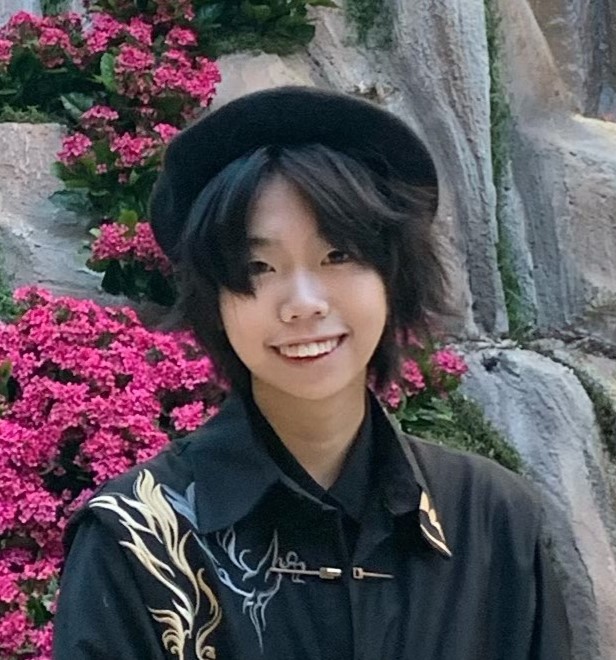

Alice Chen and Emily Jiang are both MEng students concentrating in computer systems. They are currently advised by Principal Research Scientist Lalana Kagal with the Decentralized Information Group (DIG).
Abstract
Electronic health records (EHRs) have become standard in US clinical practice, but the distributed, dynamic, private, and idiosyncratic nature of medical data such as patient notes represent barriers in harnessing the capabilities of Large Language Models (LLMs) for the clinical domain. Retrieval-augmented generation (RAG), in which an LLM is provided with both the input and a list of relevant documents returned by a retrieval phase, has emerged as a technique for domain adaptation on private data. However, existing clinical RAG systems rely on centralized knowledge bases and do not provide an interface for hospitals to regulate and restrict access to sensitive clinical documents, which hinders their feasibility for practical applications. This work contributes (i) a design for leveraging retrieval-augmented LLMs to synthesize natural-language trends over clinical data in federated storage, (ii) a framework for integrating policy-based access control security mechanisms at flexible granularity into such a federated RAG system to restrict medical data accesses based on user attributes, and (iii) ClinicalTrendQA, a novel dataset for evaluating model response performance on patient EHR-grounded clinical trends questions.

Tanner Andrulis received BS degrees in Computer Engineering and Math from Purdue University in 2021. He is currently pursuing his PhD degree under the supervision of Associate Professor Vivienne Sze and Professor of the Practice Joel Emer. His research focuses on the design and modeling of tensor accelerators, especially emerging analog and processing-in-memory architectures. Tanner was a recipient of the MIT Presidential Fellowship in 2021.
Abstract
Processing-In-Memory (PIM) accelerators have the potential to efficiently run Deep Neural Network (DNN) inference by reducing costly data movement and by using resistive RAM (ReRAM) for efficient analog compute. Unfortunately, overall PIM accelerator efficiency is limited by energy-intensive analog-to-digital converters (ADCs). Furthermore, existing accelerators that reduce ADC cost do so by changing DNN weights or by using low-resolution ADCs that reduce output fidelity. These strategies harm DNN accuracy and/or require costly DNN retraining to compensate.
To address these issues, we propose the RAELLA architecture. RAELLA adapts the architecture to each DNN; it lowers the resolution of computed analog values by encoding weights to produce near-zero analog values, adaptively slicing weights for each DNN layer, and dynamically slicing inputs through speculation and recovery. Low-resolution analog values allow RAELLA to both use efficient low-resolution ADCs and maintain accuracy without retraining, all while computing with fewer ADC converts.
Compared to other low-accuracy-loss PIM accelerators, RAELLA increases energy efficiency by up to 4.9× and throughput by up to 3.3×. Compared to PIM accelerators that cause accuracy loss and retrain DNNs to recover, RAELLA achieves similar efficiency and throughput without expensive DNN retraining.
Abstract
Compared to fully-actuated robotic end-effectors, underactuated ones are generally more adaptive, robust, and cost-effective. However, state estimation for underactuated hands is usually more challenging. Vision-based tactile sensors, like Gelsight, can mitigate this issue by providing high-resolution tactile sensing and accurate proprioceptive sensing. As such, we present TacLink, a compact, underactuated, linkage-driven robotic finger with low-cost, high-resolution vision-based tactile sensing and proprioceptive sensing capabilities. In order to reduce the amount of embedded hardware, i.e. the cameras and motors, we optimize the linkage transmission with a planar linkage mechanism simulator and develop a planar reflection simulator to simplify the tactile sensing hardware. As a result, TacLink only requires one motor to actuate the three phalanges, and one camera to capture tactile signals along the entire finger. Overall, TacLink is a compact robotic finger that shows adaptability and robustness when performing grasping tasks. The integration of vision-based tactile sensors can significantly enhance the capabilities of underactuated fingers and potentially broaden their future usage.

Prerna is a PhD student at MIT’s Computer Science and Artificial Intelligence Laboratory (CSAIL). Her research focuses on designing AI powered educational tools, curricula, and learning experiences that foster equity and creativity. She has conducted numerous workshops with high school students to introduce programming and mobile app development to them using AI-powered tools like MIT App Inventor. During her undergrad at Georgia Tech, she conducted ethnographic studies investigating the creative workarounds that educators in marginalized communities devised during covid-19 to navigate digital resource constraints. She also built educational games that empowered deaf kids (born to hearing parents) to learn sign language during their critical language learning age of 3-5 years. She has worked with non-profits globally to introduce AI curricula to underserved students by organizing participatory design workshops with their teachers and parents. She is currently investigating how Generative AI can be integrated into reflective scaffolding tools to promote students' self-regulated learning and creativity, as well as how educators can devise novel pedagogical strategies to deliver Generative AI and Data Science literacy curriculum in diverse learning environments.
Abstract
Social annotation (SA) systems anchor discussions on selected (typically highlighted) parts of a document. SA has gained popularity in education due to its usefulness for learning and mastery of course materials. Students’ social annotation learning exercises can encourage peer-to-peer learning, critical thinking, meta cognitive abilities, and reading comprehension. In this work, we introduce Nota Bene (NB), an open-source, social annotation tool developed at MIT, enabling collaborative annotation of online documents for educational purposes. With over 40,000 users across numerous universities, NB allows students to annotate course materials directly, fostering synchronous and asynchronous discussions within the content's context. This interactive environment enhances learning by integrating comments and discussions directly alongside the course readings.
Agnostiq is the company behind Covalent, a cloud agnostic, entirely pythonic, and infinitely scalable computing platform providing on-demand, serverless access to AI infrastructure such as Nvidia H100s and A100s. With Covalent, users can scale to any arbitrary number of compute resources with a single line of code. Covalent is available Open Source or as a Cloud-hosted / Enterprise offering. Learn more at www.covalent.xyz.
Abstract
In this session, we address the intricacies of managing, scaling, and deploying high-compute AI workloads with minimal infrastructure overhead, focusing on the seamless integration of multi cloud and on-prem resources. Utilizing Python's flexibility, we present a framework that supports the training of multiple agents in parallel for bespoke tasks, facilitates their interaction, and manages their serving with unprecedented efficiency. We delve into strategies for scaling these operations in parallel, all while maintaining a cost-effective posture. This Pythonic approach enables developers to programmatically orchestrate complex AI workflows, from inception to deployment, without the burden of traditional infrastructure management, paving the way for innovative developments in AI with significant reductions in time and cost.
Abstract
The climate accounting & reduction platform for the entertainment industry—our real-time dashboards connects every climate decision to cost savings. Our data-powered recommendation system empowers every team member to drive the impact journey.
Nectry is a no-code application development platform for creating enterprise-class applications. Based on formal methods and advanced functional programming with an LLM user interface, the platform empowers organizations to effortlessly build scalable and secure enterprise-class applications at unprecedented scale and speed. Nectry can be used for a wide range of application—from simple to highly complex—including business process automation, reporting and analysis, customer and employee portals, automated data flow and systems and network monitoring.
Arête is revolutionizing the user experience in the fashion e-commerce sector by using computer vision to move away from search-based shopping.
Abstract
By harnessing the power of AI, Arête is designing a hyper-personalized styling and shopping iOS app. Arête does this by catering to the unique needs of each individual user and curating outfits based on a user's location, occasion, vibe, and budget. The AI model learns a user's body shape, complexion, and stylistic preferences, enabling it to curate the perfect outfits using (i) the clothing in a users' closet and (ii) net new items available for purchase on our platform. For these recommendations, Arête works with small to medium-sized brands, creating an exciting discovery process for shoppers and connecting brands with the shoppers most excited about their products.
Edifii is a personalized digital school counselor that empowers both students and counselors, delivered as a mobile/web app for students and counselors. Classical and generative AI systems customized for high school counseling work in tandem with a streamlined ‘discovery process’ to learn about a student’s particular background and offer personalized planning guidance, or ‘path charting’ via a chatbot interface. Edifii is an always-available and well-informed counselor ready to help with step-by-step guidance towards career and college goals. Edifii also provides valuable information to counselors to make even short interactions with students as effective as possible. Edifii is available to schools via an annual subscription.
Salieri AI builds efficient and transparent AI systems that solves complicated reasoning tasks with structured data, knowledge, and physics.
Abstract
The core of trustworthy AI is grounded knowledge and verifiable reasoning. We build trustworthy AI systems that (1) follow an explicit grounding-planning-reasoning pipeline for transparency and reliability, and (2) combine autoregressive generation and first-principal reasoning engines. With our program-based scaffolding, we have made breakthrough on a wide range of information management and knowledge reasoning tasks, with significant improvements on accuracy, transparency, and efficiency.
dsideAi is an R&D start-up with 20 innovative patents and patents pending that will revolutionize internet shopping by quickly finding the exact product that fits an individual’s precisely chosen criteria. Using AI and proprietary algorithms, provides long-sought benefit of reducing million search results to one result the first time. No security or ad issues. Doubles click-through and revenues (tests).
